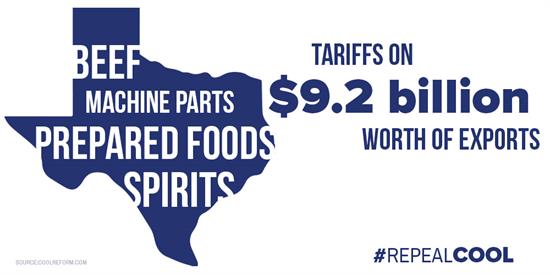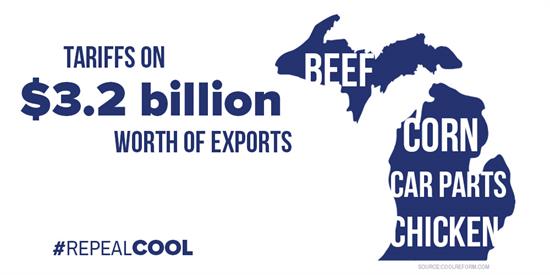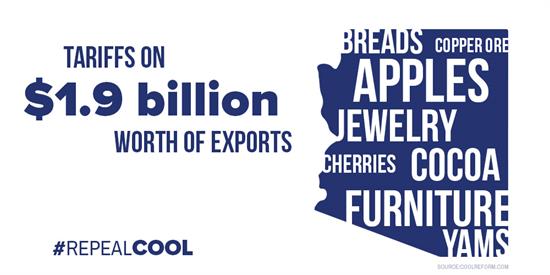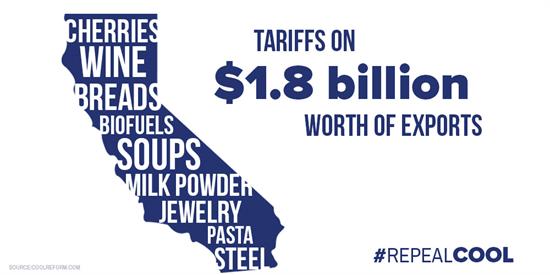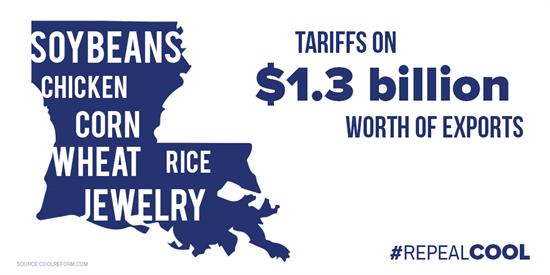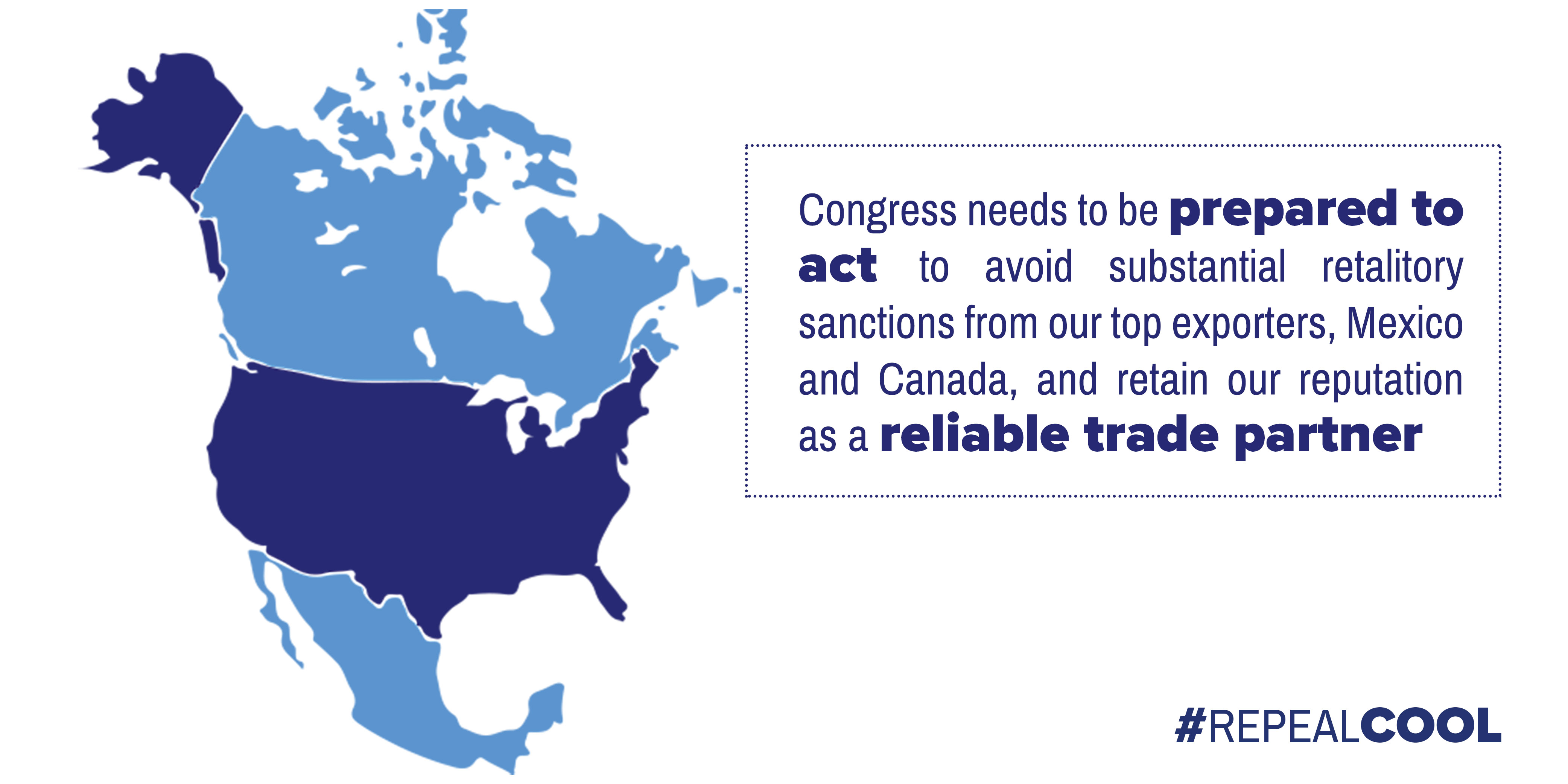Blog
|
Honoring America’s farmers and ranchers
Posted by on March 15, 2016
By Mike Conaway
America's farmers and ranchers are undeniably some of the most dedicated and humble individuals in this country. Without complaint, rain or shine, they simply wake up and work hard because that is what's needed to keep our country running. But despite their best efforts, America's farmers and ranchers are facing real challenges today. Net farm income is estimated to fall 56 percent from 2013 to 2016, the largest three-year percentage drop since the Great Depression. The problem is even more pronounced in Texas, where we saw years of drought while other states were harvesting record yields at record prices. Cotton producers have been hit especially hard the last few years. They were, in large part, met with very little support in the last farm bill in an effort to settle a World Trade Organization (WTO) dispute with Brazil. The Chinese and Indian governments have taken advantage of this situation, stimulating massive overproduction of cotton in the process. China alone is now sitting on so much cotton that if you lined the bales up end to end, they would stretch around the earth twice. That's enough cotton to make 78.5 billion T-shirts. Their reckless actions have driven global cotton prices into the ground, making it that much more difficult for our cotton producers to stay afloat. While our farmers and ranchers face markets that are neither free nor fair, they also put their livelihoods on the line every day in an industry where several factors are completely outside of their control. A single hailstorm, windstorm or flood can wipe out an entire year's income in a single day. While it is easy to take the bounty that our farmers and ranchers produce for granted, it is vital they have risk management tools available to mitigate the tremendous uncertainties they face. To that end, when crop insurance came under attack in budget negotiations last fall — threatening the very existence of privately-delivered crop insurance — we stepped in to prevent those cuts from taking effect. The agricultural community has repeatedly done its part to contribute to deficit reduction. Protecting the remaining risk management tools available to our farmers and ranchers is one of my top priorities. This national Ag Day reminds us of the importance of agriculture, to both rural and urban America. The state of the rural economy affects everyone, not just those in areas where most jobs are directly linked to production agriculture. I am proud to stand with America's hardworking farmers and ranchers today and every day.
Giving Thanks for America's Bounty
Posted by on November 26, 2015
As we gather this Thanksgiving with our families and friends to celebrate our many blessings, it is fitting to also recognize the farmers and ranchers who provided the food on our tables. Thanksgiving is a cherished time for most American families, especially those who make their living off the land. Throughout our nation’s history, our ancestors have gathered during the harvest season to give thanks and celebrate the harvest that would see them through the coming year. They understood the promise of a seed sewn in the spring would bring a bounty of food in the fall.
Much has changed for our modern day farmers. In our nation’s early days, nearly everyone produced food. Today, because of advances in technology and the development of more efficient farming methods, about 90 percent of the food and fiber we produce comes from just under 250,000 farms. Despite these changes, 97 percent of American farms remain family owned and operated, and their goal has always remained the same: It’s about feeding and clothing our growing country and world. That’s why today we celebrate the year-round commitment of American farmers. We must never forget that there is no food without the farmer. Even though the U.S. food and agriculture industry is comprised of 2.2 million farms, many Americans have never stepped foot on a farm and are often unaware how their food actually arrived on the grocery store shelf. In fact, the average American citizen is three generations removed from production agriculture. Bridging this growing divide between rural and urban communities is important to me and my colleagues on the House Agriculture Committee, which is why we are doing our best to educate and engage the public on issues. These issues affect every American on a daily basis, from the price and availability of groceries to the ripple effects of the rural economy. Our nation’s producers are the most innovative and productive in the world, providing us with the safest, most abundant, and most affordable food supply in the world. Because of this, three-quarters of a century have passed since we experienced widespread hunger during the Great Depression, and on average, we spend less of our disposable income on food than just about any other country. As we approach this holiday season, we should remain mindful of the needs that do exist both here in America and around the globe. Many families in our own communities have fallen on tough financial times and need assistance through food programs and local efforts like food banks, churches, or soup kitchens. There are few causes more worthy of our time than to help a neighbor in need, so this Thanksgiving, I encourage you and your families to consider giving back by serving others. Somehow it always feels like we’re the ones who receive the blessing when we give our time in service to others. Finally, I encourage us all to thank the farmers and ranchers who take on significant financial risks and make sacrifices year after year to feed this nation, not just on Thanksgiving, but every day. It has been an honor to serve as Chairman of the House Agriculture Committee this Congress, and I am dedicated to providing our producers with the tools necessary to continue feeding, fueling, and clothing our nation.
A Solid Start for the House Agriculture Committee in the 114th Congress
Posted by on September 2, 2015
By Chairman K. Michael Conaway
When I became Chairman of the House Agriculture Committee in January of this year, I had one primary goal: to ensure that America’s farmers and ranchers have the policies in place that they need to feed, fuel, and clothe the nation while ensuring stability and consistency for farmers, ranchers, consumers, markets, and rural communities. After all, agriculture is the foundation of our livelihood and the lifeblood of rural America. And, while our work will never be done, we are off to a great start. To date, the Agriculture Committee has held 13 full committee hearings, 20 subcommittee hearings, two executive sessions with U.S. Trade Representative Michael Froman, and marked up nine bills, eight of which have passed the House with one signed into law. In our 33 hearings this year, we have examined many issues important to American agriculture, including the state of the rural economy, where falling prices have resulted in a 43 percent decline in net farm income over the last two years, and the status of farm bill implementation. On the latter, much credit goes to USDA Secretary Vilsack, who has appeared before the committee twice this year, and his staff at USDA for their hard work. During the annual budget and appropriations process, we worked closely with the chairmen of each respective committee to ensure our hard work on the farm bill was not undermined. Both heeded the advice in our committee’s budget views and estimates letter which called for defending the farm bill and crop insurance while recognizing the significant estimated spending reductions that the committee has made over the last several years. I set an ambitious agenda this spring to reauthorize all of our expired or expiring programs and agencies. Together, we got our work done, and we have moved legislation to reauthorize everything within our jurisdiction. We have approved legislation to create a federal preemption blocking state and local biotech labeling regimes; two forestry bills; two Commodities Exchange Act bills; legislation to bring the U.S. into compliance on mandatory country of origin labeling; and reauthorization of Mandatory Price Reporting and the U.S. Grain Standards Act, where we aim to prevent another Vancouver port situation. These bills provide certainty for farmers and ranchers and give them the tools they need to continue operating their businesses without interruption. We reported these bills out of committee with strong, bipartisan support, and we moved them across the House floor in the same fashion. The Senate is now beginning its work on these legislative items. In anticipation of the next farm bill, which is still three years away, the committee is engaging in a top-to-bottom review of the Supplemental Nutrition Assistance Program, the Past, Present, and Future of SNAP. In our first seven hearings on SNAP, we looked at the program through the eyes of recipients, which helped us discover the need for more state and local flexibility in order to move from a one-size-fits-all program to one that is tailored to meet specific needs. We’ve heard from dozens of organizations and SNAP recipients on the importance of the charitable sector in engaging recipients. Churches, food banks, and other local organizations are simply better equipped than the federal government in some areas, and together we can improve the lives of the 46 million Americans in need of assistance. Many of those in the program face barriers like the “welfare cliff,” and challenges with transportation or childcare, which prevent them from being able to enter or re-enter the work force and move up the economic ladder. This summer, we also began a full review of U.S. international food aid programs. For nearly 60 years, the U.S. has been the global leader in providing international food aid—often in the form of American-grown commodities—and U.S. agricultural producers have been central to those efforts. The Agricultural Act of 2014 made several important reforms to food aid programs, and we will monitor implementation of those changes in advance of the next farm bill. Throughout all of our committee’s work, our aim has been to create an environment of greater certainty for our nation’s farmers and ranchers so they can focus on what they do best rather than looking over their shoulder wondering what Washington has in store. Our work, however, impacts much more than just producers; agriculture affects everyone. During the development of the last farm bill, the growing gap between urban and rural American became increasingly apparent. That gap seems to widen every day. Nowhere is that more apparent than Congress, where the number of rural districts continues to decline. We must do a better job of bridging that gap. That’s why our committee is focusing on building coalitions in many important areas. By engaging the public in areas like food safety and transparency, we were able to garner support from 475 groups on the Safe and Accurate Food Labeling Act, which passed the House in July. As we continue taking up issues that directly impact consumers, like Dietary Guidelines for Americans and future trade negotiations, it is important to have the input and support of all stakeholders. With fewer and fewer voices in Congress representing rural America, members of the Agriculture Committee have the responsibility to participate in ongoing work outside of the committee’s jurisdiction, whether it’s trade, energy, or national defense. In 2014, U.S. agriculture exports reached a record-setting $152.5 billion, and with recently-passed Trade Promotion Authority (TPA), Congress will be able to work alongside U.S. trade officials as they negotiate deals that could greatly expand market opportunities for U.S. farmers, ranchers, and consumers. Similarly, the House will consider legislation this fall to lift the ban on oil exports, which would benefit rural communities. Members of the Agriculture Committee have been instrumental in other efforts, like blocking EPA regulations harmful to agriculture. We have backed other committees’ efforts to repeal the death tax, pass TPA, block EPA’s Waters of the United States rule, address state and local biotech labeling laws, and deal with new regulations on sage grouse and prairie chickens. These are just a few examples of the many areas in which my colleagues on the committee, and our colleagues who have a vested interest in agriculture, have had the opportunity to represent and advocate for rural America. Whether the issue is finance or farms, welfare or rural development, humanitarian aid or national defense, agriculture is a major component. It has been a tremendous honor to lead these efforts as Chairman, and I look forward to working with our outstanding committee members going forward.
Myth vs. Fact: Setting the Record Straight on Country of Origin Labeling (COOL)
Posted by on May 15, 2015 Mandatory Country of Origin Labeling (COOL) is a failed government mandate with serious economic implications. Should the World Trade Organization(WTO) rule against the United States for the 4th time in the coming days, Canada and Mexico will be authorized to seek retaliation against the U.S. by imposing economically devastating tariffs on U.S. exports. Supporters of COOL rely on misinformation and false claims to make their case. Let’s see how their arguments stack up against the facts:
COOL Retaliation & its Impact on the U.S.
Posted by on May 13, 2015 The World Trade Organization (WTO) Appellate Body will soon rule on Canada and Mexico’s case against the U.S. on the mandatory Country of Origin Label (COOL) requirement on muscle cuts of beef and pork.This is the fourth and final decision by the WTO, and in the three previous decisions it has ruled against the U.S. COOL law. If the U.S. loses this case, Canada and Mexico have indicated their intention to retaliate on hundreds of U.S. products, ranging from meat and fruit to jewelry, furniture, and biofuels. Pending arbitration, retaliation claimed by Canada and Mexico could be economically devastating. Canada and Mexico are our top export partners, and these preferred relationships are vital to our local and national economies. The tariffs would harm companies and threaten jobs in every state. Find out the impact COOL would have on a wide range of products in your state and their export value by clicking here. The figures are estimated based on the preliminary retaliation list provided by Canada and past retaliatory tariffs implemented by Mexico. Texas
10 COOL Things to Know
Posted by on May 12, 2015 In the coming days, the World Trade Organization (WTO) is expected to release its fourth and final decision on the U.S. Country of Origin Labeling (COOL) rule and announce if the United States has been found compliant with trade standards. Should the U.S. lose this appeal, Congress will need to be ready to avoid retaliation from Canada and Mexico, our top two export markets. Here are 10 things you should know about COOL.
1. COOL is not about food safety or traceability. The U.S. Department of Agriculture’s Agricultural Marketing Service (AMS), which enforces COOL, has repeatedly stated that, “the COOL program is neither a food safety or traceability program, but rather a consumer information program.”
2. COOL is costly for producers, retailers, and consumers. According to AMS, the first year-incremental costs for growers, producers, processors, wholesalers, and retailers are $2.6 billion. Furthermore, the estimated cost to the United States’ economy in higher food prices and reduced food production in the tenth year after implementation of the rule is $211.9 million.
3. There is no increase in consumer demand for origin labeling information as a result of COOL. According to a study by Kansas State University, there is no evidence of a demand increase in beef, pork or chicken products when the COOL label is present. Other economic and academic studies show no evidence mandatory country of origin labeling in the U.S. retail meat markets has increased consumer demand.
4. Consumers interested in country of origin information are not willing to pay more for it. Most consumers who preferred COOL in a consumer study interpreted the program to provide them with additional food safety assurances and enough traceability information to allow a meat product to be completely traced back to the farm of origin. Mandatory COOL is no more than a food-labeling program and only allows identification of a meat product’s country of origin by stage of production. Across a multitude of evaluations, no evidence of a change in demand following implementation of COOL was found. *Source: American Agricultural Economics Association
5. The World Trade Organization (WTO) has ruled against the U.S. three times. In December 2008, Canada and Mexico requested consultations with the U.S. on COOL regulations that were scheduled to go into effect in January 2009. In two instances (2011 and 2012), the WTO found that the way U.S. COOL regulations were implemented violated our trade obligations by discriminating against imported livestock. The U.S. was given until May 2013 to bring COOL regulations into compliance. The USDA issued a revised COOL rule in May 2013 and once again Canada and Mexico claimed the revised rule did not bring the U.S. into compliance and that it was more burdensome than the original rule. The WTO ruled against the U.S. for the third time, stating the that the amended COOL measure increases the original COOL measure's detrimental impact on the competitive opportunities of imported livestock in the U.S. market, because it necessitates increased segregation of meat and livestock according to origin. The U.S. appealed the decision and the WTO is expected to reveal its fourth and final decision mid-May.
6. Canada and Mexico are expected to retaliate should the WTO rule against the U.S. in the coming days. Both Canada and Mexico have stated they will retaliate against the U.S. if the WTO finds the United States non-compliant. In 2013, Canada released a retaliation list of products imported from the U.S. that may be targeted in response to the U.S.’s failed attempt to comply with the WTO ruling on COOL. Mexico has not yet released a retaliation list, but previous retaliatory action by Mexico hurt a broad spectrum of American businesses.
7. Retaliation could hurt much more than just the agriculture industry. Everything from California wine, Arizona apples, Michigan corn, and Louisiana rice could be affected by retaliation from Canada and Mexico. Various U.S. products and commodities could become subject to large tariffs making it difficult for producers to earn a profit. For example, Texas could face tariffs on $9.2 billion worth of exports on beef, spirits, machine parts, and prepared foods. Click here to see specific data on your state.
8. U.S. trade relationships could be damaged as a result of COOL. The U.S. could face substantial retaliatory sanctions from Canada and Mexico on a wide variety of commodities and products, lose its reputation as a reliable trade partner, and U.S. businesses could lose valuable partnerships with Canadian and Mexican businesses. 9. Congress must be prepared to act quickly. If the WTO finds the U.S. non-compliant for the fourth time, Congress will need to act within days of the decision to avoid retaliation and retain the valuable relationship with Canada and Mexico, the U.S.’s top two export markets.
10. More than 100 American and international businesses and organizations do not support COOL. The COOL Reform Coalition consists of over 100 American and international businesses and organizations that will be affected if the U.S. is found non-compliant for the fourth time as a result of COOL.
Agriculture Committee begins full-scale SNAP review
Posted by on February 27, 2015 “SNAP is essential in protecting the most vulnerable citizens during tough times, but we need to have a complete understanding of its mission and purpose.” That was the message from House Agriculture Committee Chairman K. Michael Conaway this week as the committee began its top-to-bottom review of the Supplemental Nutrition Assistance Program (SNAP), previously known as food stamps. SNAP is now the largest welfare program in both the number of recipients and the amount of spending, yet the program lacks a clear mission, and data reveals that it is not helping to lift people out of poverty. Instead, it has become an income support for many. A thorough, thoughtful reviewChairman Conaway, a CPA by trade, is committed to begin a top to bottom review of the program with no preconceived notions or legislative agenda. At the full committee hearing on Wednesday, he said the committee wants the committee to “strengthen the program so it can serve as a tool to help individuals move up the economic ladder,” and doesn’t want SNAP to “hold people back from achieving their potential.” Why now?The Ag Committee is in the unique position of being post-recession and post-reauthorization. Rather than making haphazard reforms under a time-crunch, Chairman Conaway and Nutrition Subcommittee Chairwoman Jackie Walorski have proactively begun a thorough review, beginning with a fact-finding series of hearings this week exploring the history of the program as well as the dynamics and characteristics of its recipients. Necessary adjustmentsWhile the economy has changed and other welfare programs have adjusted to meet changing needs, it does not appear that SNAP has. Overall unemployment has fallen, yet the number of long-term unemployed remains high. The long and slow recovery since 2009 brought in a new group of healthy, working-age recipients to the program, who in the past had not used SNAP. This is a new dynamic not previously experienced following other recessions when periods of unemployment were much shorter. It is clear the needs of the SNAP population have changed, and now is the time for the SNAP program to change accordingly.
Source: Department of Agriculture, Food and Nutrition Service; Department of Health and Human Services, Administration for Children and Families; Department of Labor, Employment and Training Administration; Social Security Administration, Office of Retirement and Disability Policy. Looking AheadOver the coming months, the Agriculture Committee will continue holding hearings, at both the full committee and subcommittee levels, featuring a range of stakeholders.
|


